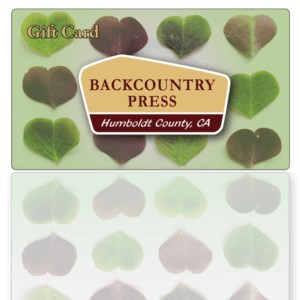Bumble bees (Bombus spp.) are an important group of North American wild pollinators. However, in the latter half of the 20th century, concern has arisen because of a noticeable declines in many species’ populations—due to a variety of factors including pesticides and diseases from managed bees.
Decline of the world’s rarest bumble bee
The Klamath Mountain endemic Franklin’s bumble bee (Bombus franklini) was named in 1921 for Henry J. Franklin, who authored the bumble bees of North and South America (1913). The Franklin’s is even more vulnerable than other Bombus species due to its restricted range—confined to Siskiyou and Trinity counties in California; and Jackson, Douglas and Josephine counties in Oregon. This is considered the smallest range of any Bombus species in the world.
Robbin Thorp, the late professor of entomology at UC Davis, worked tirelessly to better understand the species and the decline he witnessed. Until 1998, Franklin’s bumble bee was prevalent throughout its range—and even in yards around Ashland, Oregon. Surveys since 2004 have been almost entirely incapable of observing a single specimen. The last time the species was seen was by Thorp, on Mount Ashland, Oregon, in 2006. In 2021, the species was listed as endangered by the U.S. Fish and Wildlife Service. But, is it too late?
Colla et al. (2012) found that bumblebee species with a narrow climatic niche, species at the edge of their climatic niche, and species restricted to certain habitat types are more vulnerable. This checks all the boxes for the Franklin’s bumblebee and its relationship to the Klamath Mountains. As lovers and explorers of the region, it is our responsibility to diligently watch for this species, which is possible to identify with a good photo but approaching impossible to find.
Distinct characteristics of the Franklin’s bumble bee include:

(1) Predominantly black face with yellow on the vertex (top of the head)
(2) Yellow on the anterior top of the thorax extends well behind the wing basesand
(3) forms an inverted U-shape around the central patch of black
(4) white at the tip of the abdomen.
Illustration by Elaine Evans courtesy of the Xerces Society.
Franklin’s bumblebees have yellow on the anterior top of the thorax that extends behind the wing bases and forms an upside-down U around the central patch of black. There is no yellow on the abdomen, which has white at its tip, and the face is mostly black. Males and females are similar. They are sustained by lupines (Lupinus spp.), poppies (Eschscholzia spp.), hummingbird mints (Agastache spp.), coyote mint (Monardella spp.), and vetches (Vicia spp.). They prefer abandoned rodent burrows for colonies.
Further Reading
- Listing Document from USFWS
- Franklin’s bumblebee fact sheet from USFWS
- iJPR podcast and article


Leave a Reply